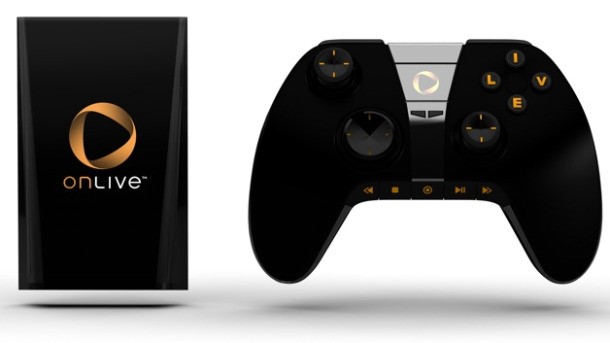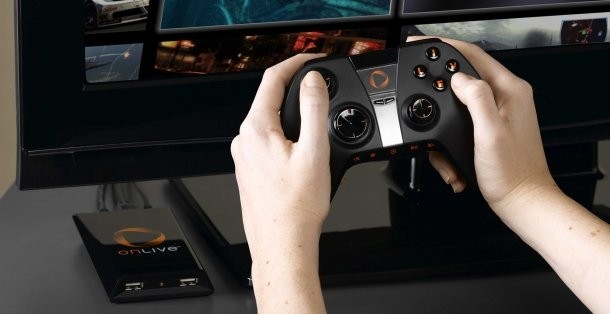OnLive: Hands On With The Service And The System

Last week, new details about the price and availability of the OnLive microconsole came to light. With the system shipping out on December 2 for a reasonable $99, you may be wondering if it’s worth the minimal entry fee. I’ve been playing around with the microconsole for the past couple of weeks, and I’ve come to the conclusion that OnLive definitely has an audience, but there’s a good a chance it isn’t for you.
Let’s get the technical stuff out of the way first. If you’re skeptical that OnLive functions as promised, I understand the concern, but it works. The biggest barrier to entry is simply that it requires a wired, high-speed internet connection (a 3Mbps connection is required and 5+ is recommended). Assuming that’s taken care of, though, getting signed up is extremely easy. You can create an account at the OnLive website, and you don’t even have to attach a credit card to the account before you can hop on the console and begin playing trial versions of any game.
I tested the game at home on my Comcast 12 Mbps cable Internet setup. Almost every game that I tried on the service ran very smoothly and with no noticeable lag between controller input and the action happening on-screen. The least friendly title was also the most fast-paced -- the racing game Dirt 2 -- but it was hard to tell if the occasional hitches and slowdown were due to OnLive’s performance or a rough PC port. On the other hand, action titles that required fast reflexes -- such as Unreal Tournament III and Prince of Persia: The Forgotten Sands -- seemed to work perfectly. Graphics weren’t quite as sharp as on an Xbox 360 or PS3, but even on a 40-inch display, the difference was negligible.
The microconsole comes with a single fairly high-quality controller that struck me as kind of a mash-up of the Xbox 360 and PS3 pads. The two analog sticks are located in the middle, like on a PS3, but the shoulder buttons are of the nicer Xbox 360 variety, and the face buttons are labeled "A," "B," "X," and "Y" in the same layout as on a 360 controller. The one totally unique part about the OnLive controller is the bottom: a series of buttons for recording and playing back game clips, which highlight one of the elements that sets OnLive apart from the competition.
Like most modern gaming consoles, OnLive has a heavy focus on community, allowing for friends lists and sending messages. What’s new is that OnLive also allows you to take "Brag Clips" while you play -- brief videos showing off something you did in-game. At any point while playing a game on OnLive, you can tap the "record" button on the bottom of the controller, and it will instantly save a video of the last 10 seconds of gameplay, allowing you to hit the button after something cool has happened instead of needing to plan ahead. Brag clips are then automatically uploaded so other OnLive players can check out your accomplishments.
If seeing 10 seconds of another player’s game isn’t good enough, OnLive also features the Arena, where you can view anyone with a public account as they play a game live. You don’t need to own the games in question or pay anything, and you can even interact with the player by cheering or jeering them. It’s the kind of feature that I find really awesome, although I’m not sure the appeal is very wide. Call me a voyeur if you must, but I had a lot of fun checking out what random people were doing in Just Cause 2 or Splinter Cell: Conviction and then letting them know what I thought. Getting jeered when I made a stupid jump in Prince of Persia made my mistake all the more embarrassing.
Gamers aren’t going to purchase OnLive just for the chance to watch other players, though, and that’s where the situation starts getting trickier. Since OnLive’s games are streamed from their servers, you won’t be receiving any physical discs nor downloading data to your microconsole. Instead, you can select any game from OnLive’s current library of around 35 games and start playing within 10 seconds or so. Almost every game on the service will allow you to play free for 30 minutes.
Pricing for playing full games is one of OnLive’s biggest weaknesses right now. To purchase a “full PlayPass,” you’ll pay between $4.99 for indie titles and $49.99 for new releases. Since you’re paying for the PC version of the game, you’re paying $10 less than the $59.99 console norm, but that’s still too much with the restrictions that OnLive comes with. For one, you can only play the game when your Internet and the OnLive servers are both up and running. To be fair, OnLive CEO Steve Perlman tells me that they’ve had 100% uptime since their June launch, but that doesn’t guarantee that something won’t mess up in the future, and it certainly doesn’t help if your home network goes down during your free gaming afternoon.

The other problem with paying more or less full price is that since you’re not buying a physical game, you’re actually just purchasing a license to play the game for a limited period of time. Right now, OnLive guarantees access to games for a minimum of three years after they appear on the service. That means when you make a purchase on OnLive, you’re placing your faith that you’ll be able to play the game whenever you want into the hands of OnLive’s success and whatever contracts they have worked out with publishers. Even digital download services like Steam allow you to back up your purchases and play in offline mode. It’s not inconceivable that a game you purchased from OnLive could just disappear at some point -- though we’re far enough away from the three-year mark on any of their titles that we don’t yet know how the company will handle that.
On the plus side, many of the games available on OnLive right now are a bit older, meaning they’ve already dropped below the $49.99 launch price. However, that highlights the service’s other huge weakness: the size of its catalogue. We’re coming up on six months since it launched on PC, and (as mentioned above) the entire game library is still below 40 games. OnLive has openly advertised that they have more than 100 games in the works, such as Red Faction: Armageddon, Homefront, and F.E.A.R. 3, and some of these titles will be coming at the same time as they launch on PC and console.
One-hundred games coming is all well and good, but until they get here, players will need to deal with the limited selection currently available. With some major gaps in publisher support, such as EA and Activision, and first-party exclusives like Halo or God of War almost guaranteed never to be available, it’s difficult to recommend OnLive’s microconsole to hardcore gamers in its current state.
Things aren’t entirely grim, though. One idea from OnLive that I absolutely love is the ability to rent games. For around $5 or $6, you can rent most games for three days, and around $9 will up your rental to five days. This gives you access to the full game for the length of your rental. Perlman tells me that they’re even planning to add in the ability for players to carry over saved games for multiple rentals.
I remember walking to the video store after school on Fridays as a child and picking out an NES or SNES game to spend the weekend playing obsessively. That ritual helped me discover classics like Super Metroid and A Link to the Past, and it was a major part of what made me fall in love with gaming. With major retail rental outlets like Blockbuster disappearing, I’ve often wondered if that way of experiencing a larger number of games is dead to kids of this generation. A service like OnLive could make it possible again. It also presents a reasonably priced way to blast through the 6-10 hour single-player campaigns that have become normal for so many games.
Between the free trials, the rental service, and the cheap $99 price point, OnLive’s microconsole seems to be targeting a relatively underserved audience: kids and young adults with limited income to spend on gaming. The problem is reaching this audience. By Perlman’s own admittance, the company has spent very little on marketing, meaning that right now the only people who know about them are hardcore gamers who probably already own another console. Perlman says they don’t mind when a gamer uses OnLive to check out demos and then purchases full games for a different console -- they’re compensated by publishers for demo plays -- but if you want to use it as a demo machine, it makes more sense to download the free PC version than to buy the microconsole. Another issue is that the audience that stands to benefit the most from using OnLive for renting is also more likely to have slower Internet speeds (source).
According to Perlman, OnLive has plenty of upgrades to their service planned to help it appeal more to hardcore gamers. Achievements, leaderboards, and multiplayer tournaments are all planned additions. Support for the iPad is being looked at, and OnLive will also gain a monthly subscription option before the end of the year that will give users unlimited access to an as-yet-undefined portion of the service’s library. Though these are solid steps toward rounding the service out, I wonder if it OnLive wouldn’t be better served to figure out ways to reach out and capture a more mainstream audience with less money to devote to gaming.
After a testing out several games on the microconsole, I remain as impressed with OnLive’s technology as I was when it launched on the PC. It single-handedly proves the viability of cloud gaming as a potential future for our hobby. With that said, I can’t shake the feeling that it still may be ahead of its time. The business model and selection for OnLive needs some work before it’s going to be able to find a wide audience. Perlman has ambitious plans for the company, and his enthusiasm is contagious. I just hope that OnLive sticks around long enough to build the service toward the potential it has.

Get the Game Informer Print Edition!
Explore your favorite games in premium print format, delivered to your door.
- 10 issues per year
- Only $4.80 per issue
- Full digital magazine archive access
- Since 1991









